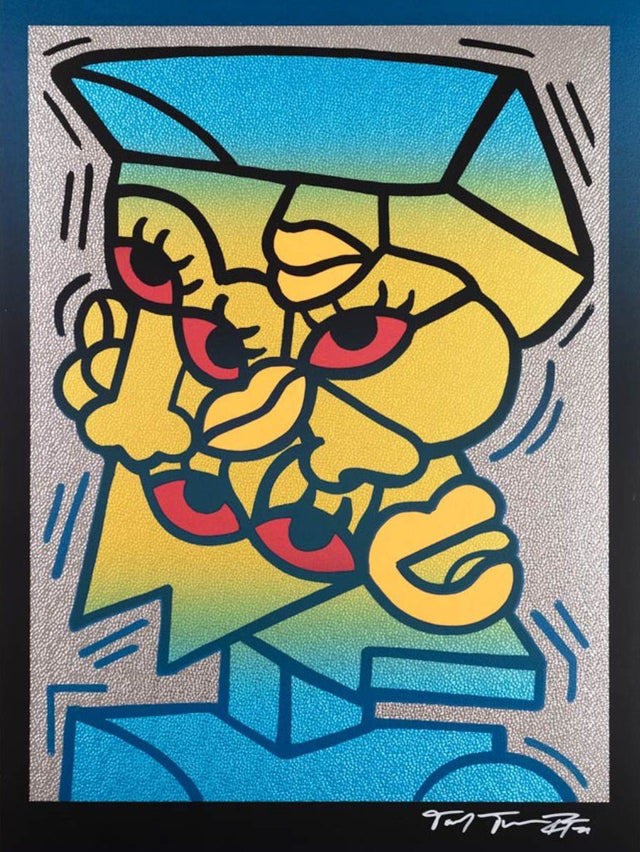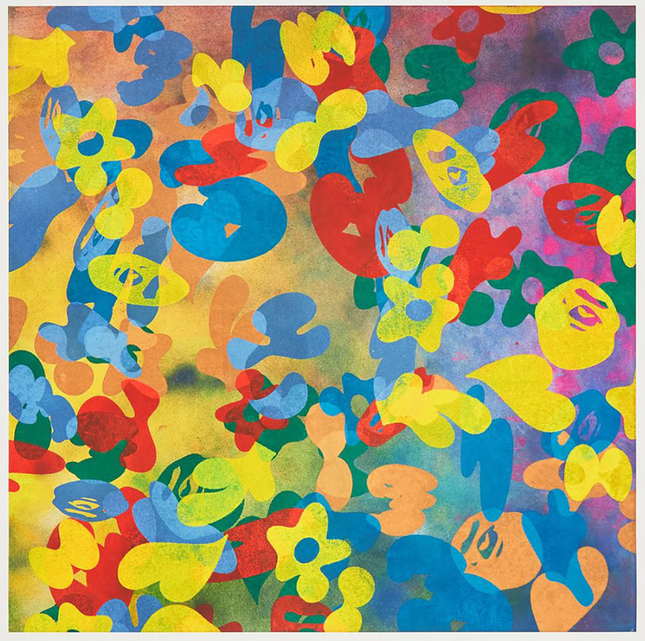Abstract Abstraction in Street Pop Art & Graffiti Artwork
Abstract abstraction, a concept often perceived as redundant, is a significant and vibrant facet of street pop art and graffiti artwork. This artistic approach transcends the conventional boundaries of abstract art by pushing the limits of form, color, and composition to create pieces that defy easy categorization or interpretation. In street pop art and graffiti, abstract abstraction becomes a tool for artists to communicate complex ideas and emotions, often rooted in social, political, or personal contexts. Abstract street graffiti art is a form of urban art typically featuring bold and expressive designs, shapes, and colors intended to convey emotion, movement, and energy. Unlike traditional graffiti, which often consists of simple tags or stylized lettering, abstract street graffiti art is typically characterized by its emphasis on abstract shapes and patterns and its use of color and texture to create a dynamic and visually engaging composition. One of the defining features of abstract street graffiti art is its ability to transform an otherwise mundane urban landscape into a vibrant and exciting space. By using the walls, buildings, and other city surfaces as their canvas, graffiti artists can create large-scale works of art that can be viewed and appreciated by anyone who passes by.
In some cases, these works of art can even become landmarks or cultural touchstones within the communities where they are located. Another important aspect of abstract street graffiti art is its ability to convey powerful messages or ideas through visual imagery. Whether it's a statement about social justice, a celebration of diversity and inclusivity, or simply an expression of personal creativity and self-expression, abstract street graffiti art has the power to communicate complex ideas and emotions in a way that is accessible and engaging to a wide range of audiences. Despite its many virtues, abstract street graffiti art is still often viewed with suspicion or even outright hostility by some members of the general public.
In many cases, this is due to a perceived association with vandalism and criminal activity or simply a lack of understanding or appreciation for the cultural and artistic value of this unique and dynamic urban art form. Despite these challenges, abstract street graffiti art continues to thrive and evolve as artists worldwide push the boundaries of what is possible with this exciting and dynamic medium. Whether you see it as a bold act of rebellion or a powerful form of artistic expression, there is no denying the impact that abstract street graffiti art has had on our cities and our culture, and its influence is sure to be felt for many years.
Evolution and Characteristics in Street Art
A gradual shift from the traditional graffiti styles of the 1970s and 1980s marks the evolution of abstract abstraction in street pop art and graffiti artwork. Early graffiti, predominantly in New York and other urban centers, focused on lettering and figurative elements. However, as the art form matured and spread globally, artists began experimenting with abstract forms, color palettes, and spatial arrangements. Pioneers in this movement, like Futura (real name: Leonard Hilton McGurr, United States), transcended conventional graffiti styles, employing spray cans to create sprawling, abstract compositions that were groundbreaking at the time. These artists challenged the norms of both street art and the broader art world. They rejected the idea that graffiti must be about words or recognizable images, instead emphasizing emotional expression and individual creativity. The result was a dynamic and unpredictable form of art that could adapt to any surface or environment and spoke to a diverse, urban audience.
Notable Contributions and Artists
In discussing abstract abstraction in street art and graffiti, it's essential to highlight key figures who have shaped its trajectory. One such artist is Jean-Michel Basquiat (real name: Jean-Michel Basquiat, United States, 1960–1988). Although primarily known for his work in the neo-expressionist movement, Basquiat ventured into abstract graffiti under SAMO. His work in the streets of New York blended text and imagery in a way that blurred the lines between figurative and abstract art, setting a precedent for future generations of graffiti artists. Artists like Banksy (real name unknown, United Kingdom) have also contributed significantly to the field in Europe. While Banksy's work is more symbolic and political, the abstract elements in his compositions – the play with shadows and the distortion of forms – align with the principles of abstract abstraction. Banksy's art, often riddled with irony and dark humor, utilizes abstraction as an aesthetic choice and a means of commenting on societal issues.
Impact and Future Directions
The impact of abstract abstraction in street pop art and graffiti artwork extends beyond the art world. It has influenced graphic design, fashion, and advertising, demonstrating its vast reach and versatility. This art style challenges viewers to engage with the work more intuitively and emotionally, often leaving interpretation open to the individual's experience and perspective. As for the future, the trajectory of abstract abstraction in street art and graffiti seems poised for continual evolution. With digital technology and new mediums, artists have more tools to explore and express their visions. The rise of augmented reality (AR) and virtual reality (VR) offers new platforms for street artists to experiment with space and form in previously unimaginable ways.
Moreover, the growing acceptance of street art and graffiti in the mainstream world suggests that abstract abstraction will continue gaining prominence and respect. Museums and galleries increasingly showcase street art, acknowledging its cultural significance and artistic merit. This recognition paves the way for new artists to explore abstract abstraction, pushing the boundaries of street art and how it can communicate with a global audience. Abstract abstraction in street pop art and graffiti artwork represents a dynamic and evolving field that defies easy categorization and continues to challenge and inspire artists and audiences alike. Its significance lies in its aesthetic appeal and its ability to communicate complex ideas and emotions, making it a vital component of contemporary art.




